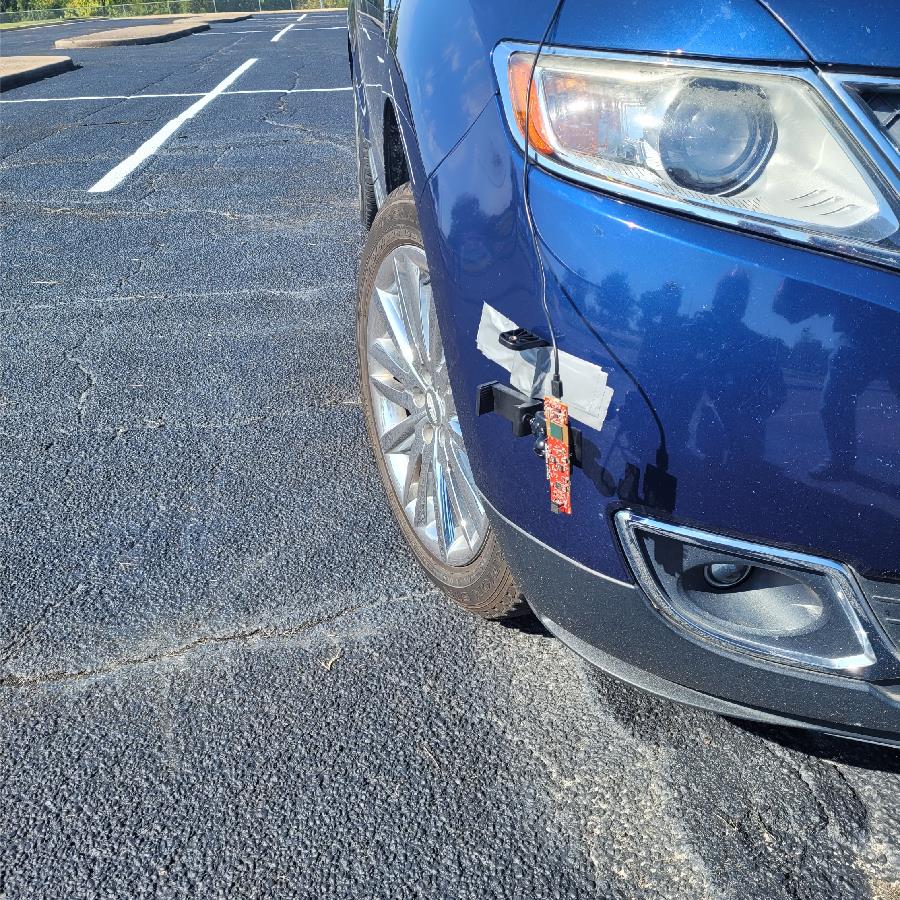TIDUF00 November 2021
- Description
- Resources
- Features
- Applications
- 5
- 1System Description
- 2System Overview
-
3Hardware, Software, Testing
Requirements, and Test Results
- 3.1 Required Hardware and Software
- 3.2
Testing and Results
- 3.2.1 Test Setup
- 3.2.2
Test Results
- 3.2.2.1 Use Case – Vehicle, Bicycle, Pedestrian Detection
- 3.2.2.2 Use Case – Traffic Cone, Grocery Cart, Sign Pole, Pipe, Shrub
- 3.2.2.3 Use Case – Pedestrian Standing in Empty Parking Space
- 3.2.2.4 Use Case – Pedestrian Standing Next to Car
- 3.2.2.5 Use Case – Empty Parking Space
- 3.2.2.6 Use Case – Cross Traffic Alert
- 3.2.2.7 Use Case – Parking Block, Curb Detection
- 4Design Files
- 5Software Files
- 6Related Documentation
3.2.1 Test Setup
The AWR1843AOP EVM was used for testing. The EVM was placed vertically with USB connector at the top as shown in Figure 3-1. For some use cases the EVM had a 0 degree rotation (boresight), for some other use cases it had a 45 degree rotation. The EVM rotation is described for each use case.
The software used for testing was described in previous sections. The software is available in the TI Resource Explorer in the Software section as part of the mmWave Automotive Toolbox.
 Figure 3-1 AWR1843AOP EVM Setup.
Figure 3-1 AWR1843AOP EVM Setup.